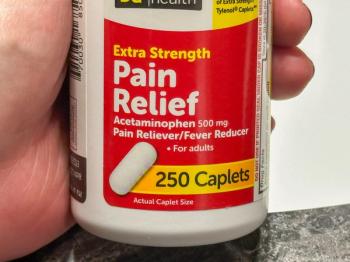Key Takeaways
- Pharmacy students have 3 main career avenues post-PharmD: clinical pharmacy in a hospital setting, community-focused retail pharmacy, or pharmaceutical/biotech industry roles for drug therapy innovation and development.
- Collaboration between academia and the pharmaceutical industry enhances research and innovation, aligning academic research with practical applications and creating diverse opportunities for PharmD graduates within drug development, clinical trials, FDA processes, and pharmacovigilance.
- Strategies to bridge academia-industry gap include clear communication channels, collaborative research projects, internship programs, industry advisory boards, technology transfer offices, and industry-designed curricula, fostering a symbiotic relationship that enriches the industry and empowers pharmacy students for multifaceted roles.
As pharmacy students begin to discern their calling as health care professionals and decide where and how they will utilize their Doctor of Pharmacy (PharmD) degree, it is generally understood that there are 3 main avenues that licensed pharmacists can pursue. They can focus on clinical pharmacy to serve the needs of patients primarily in a hospital setting; they can pursue more direct contact with a community working as a retail pharmacist; or they can join the pharmaceutical or biotech industry with the aim of innovation or development of drug therapies.
Although there have been several prominent reports stating that the job market in pharmacy is perhaps oversaturated, I believe that this saturation lies more in the first 2 professional avenues. It is for this reason, among others, that we in academia must begin to explore greater collaboration with the pharmaceutical and biomedical industries.
There are persuasive arguments for bridging the gap between industry and academia and strengthening their collaboration. The first is that both the pharmaceutical industry and pharmaceutical academia stand to gain from the pooling of their respective resources and infrastructure.
Combining these resources will do much to advance research and innovation. As an academic, I am aware that academic research can sometimes become isolated from practical implementations. As important as that research obviously is, in industry much of the research is geared toward finding clinical solutions with real-world applications. The pooling of resources allows us to promote both priorities.
Perhaps the most persuasive reason for industry-academia collaboration is the many opportunities it opens for pharmacy students who may not have considered all the ways they can use their PharmD to serve the cause of humankind. The pharmacist can work to design, establish, and conduct clinical trials.
When a new drug is developed, they can work on the FDA side, reviewing the new drug approval (NDA) process or on the industry side, formulating the application for the NDA. They can also work in pharmacovigilance, medical affairs, or as medical science liaisons—to give just a few examples.
I propose a number of processes by which we can bridge the gap between academia and industry:
Establish clear communication channels
Create formal communication channels between academic institutions and pharmaceutical companies. This could include regular meetings, forums, or conferences in which researchers, educators and industry professionals can exchange ideas and information.
Develop joint research projects
Encourage collaborative research projects that involve both academia and industry. These projects can focus on real-world problems and provide opportunities for students and faculty to work alongside industry experts.
Develop internship programs
These programs can allow students to gain practical experience within pharmaceutical companies. This hands-on experience can help students apply theoretical knowledge and gain insights into industry practices.
Form industry advisory boards
Create industry advisory boards that comprise professionals from pharmaceutical companies. These boards can provide guidance to academic programs, ensuring that curricula align with industry needs.
Plan guest lectures and workshops
Invite industry experts to deliver guest lectures and workshops at academic institutions. These sessions can provide students with industry insights and networking opportunities.
Develop collaborative funding opportunities
Explore joint funding opportunities where both academia and industry contribute to research projects. This shared investment can incentivize collaboration and lead to innovative research.
Establish technology transfer offices
Technology transfer offices within academic institutions can facilitate the transfer of intellectual property and innovations to industry partners. This can lead to the commercialization of research outcomes.
Provide continuing education for industry professionals
Workshops or continuing education programs specifically designed for industry professionals can help them stay up to date on the latest advancements and research findings.
Develop industry-designed curriculum
Academics can allow industry professionals to contribute to the development of curricula, ensuring that academic programs are relevant to industry needs.
Plan networking events
Organize networking events, conferences or symposiums that bring together academia and industry stakeholders. These events can foster relationships and collaborations.
Share facilities and resources
Consider sharing research facilities and resources between academic institutions and industry partners. This can reduce costs and promote resource utilization.
Bridging the gap between industry and academia and strengthening their collaboration is not only important to the long-term success of the industry, but also opens the door for students to gain relevant exposure and experience that they can take into their next venture.
About the Author
Dr. Priyank Kumar is the associate professor in the Department of Pharmaceutical Sciences at Marshall B. Ketchum University’s College of Pharmacy. He joined MBKU in August of 2018. Dr. Kumar, as an academician, has a comprehensive and diverse background in a wide variety of disciplines including pharmacology, cancer biology, curriculum development and assessment and academic affairs. These distinct experiences have contributed to Dr. Kumar’s desire to pursue as a professor and scientist.















































































































































































































